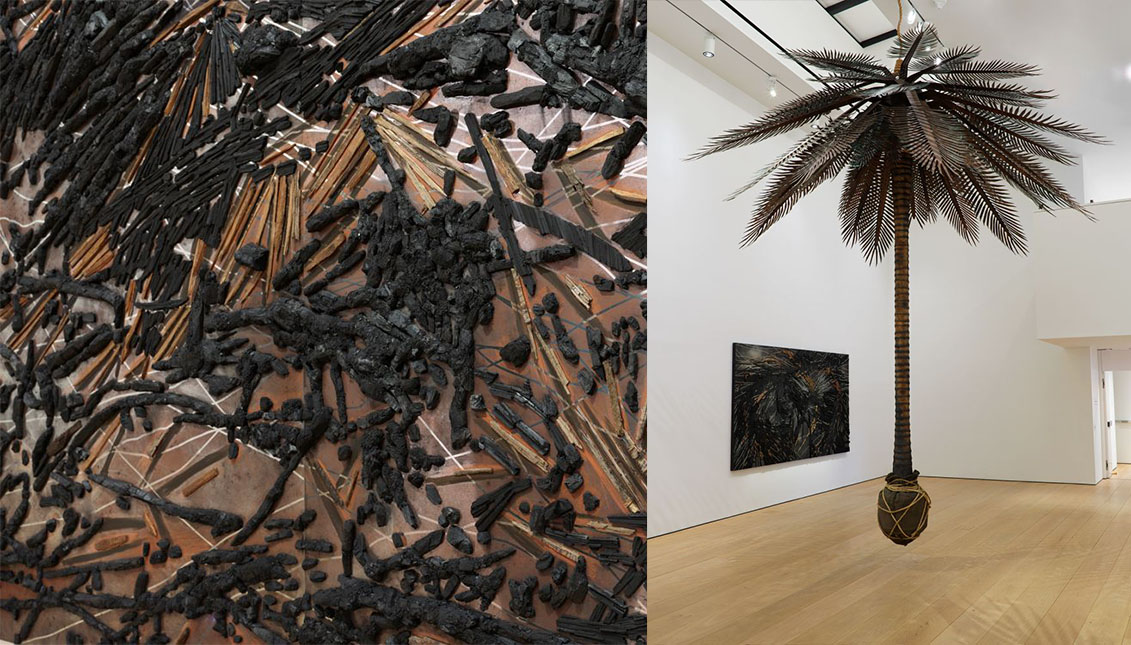
Wrecking Art: The Caribbean 'Maelstrom' by Teresita Fernández
The Lehmann Maupin Gallery in Manhattan hosts Maelstrom, a powerful mosaic of works marked by the catastrophe and the genocide in the Caribbean until Jan. 23.
Located in Norwegian waters, the Maelstrom is known as "the navel of the ocean." A huge whirlpool that swallows any boat in its path and is a recurring motif in literature, from the Nordic sagas to Twenty Thousand Leagues Under the Sea by Verne, and even Edgar Allan Poe.
It's a terrible funnel of time and matter that Miami artist Teresita Fernández has placed on the coasts of the Caribbean to narrate the visual impacts that lash us with hurricane winds amid a history of injustice and oppression of the area of Latin America.
It is erased from our collective memory and invisible to most, like the Analogous Mountain that Daumel spoke of in his book.
Showcasing a large palm tree levitating in the air, at the mercy of an ethereal breeze, it symbolizes a tropics made of splinters. Rising (Lynched Land) panels are covered with stubble-like the remains of a shipwreck, and the Black Beach (Unpolished Diamond) represents an ecological and human trauma that reaches our noses of salt and sadness.
This is the anti-colonialist and frank message that Fernandez has printed on all of her works, which cover three rooms of her latest exhibition at Lehman Maupin, and can be seen until Jan. 23.
It's a sculptural and pictorial collection where Caribbean Cosmos stands out as a ceramic mosaic of eight by 16 feet. The work evokes storms from a bird's-eye view as it does from below, to emulate the celestial galaxies.
There is also a set of collages entitled Hurakán followed by a piece that references the practice of eugenics practiced on Puerto Rican women in the middle of the century.
RELATED CONTENT
In the work of Teresita Fernández, the environment and history merge as a kind of psycho-geography of ignominy. From the abandonment of a region and its inhabitants to the various oppressions experienced over time. From the first colonization to the following neo-colonizations that explain how the violent catastrophe is not only a physical phenomenon, but also a social, cultural and above all economic one.
At the same time, the archipelago that Fernandez reproduces is mental and pulsates for the other colonized collective imaginations.
Teresita Fernandez's Caribbean can be extrapolated to many places, as if there were more than one Maelstrom — and there are — all over the world.
Now, those remains of history have been regurgitated by the sea and washed ashore to reinterpret the history of the islands as a sort of Braille that includes their shipwrecks and their lost ships after centuries of oppression.
Not in vain, the word Caribbean comes from the Taino "Carib" and means "human being."
In 2011, President Barack Obama appointed Teresita Fernandez to the U.S. Commission on the Arts, becoming the first Latina to serve on this panel and advise the President and Congress.
Internationally recognized for her monumental public art and her immersive sculptures, Fernandez's work is marked by the importance of perception — the psychology of sight — and her installations are inspired by the connection between place and matter, between cultural and historical references, and the natural world to make visible the violence suffered by a landscape and those who live in it.











LEAVE A COMMENT: